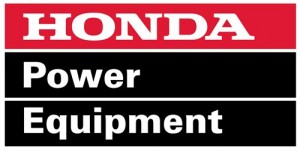 Aftermarket parts, being slightly less in cost than Original Equipment Manufacturer (OEM) parts, may at first seem very appealing. The internet is full of places that sell them, and hundreds of companies manufacture them. However, on closer examination, their allure is deceptive. Aftermarket parts are riddled with serious problems and drawbacks.
Aftermarket parts, being slightly less in cost than Original Equipment Manufacturer (OEM) parts, may at first seem very appealing. The internet is full of places that sell them, and hundreds of companies manufacture them. However, on closer examination, their allure is deceptive. Aftermarket parts are riddled with serious problems and drawbacks.
Firstly, aftermarket parts are usually of lower quality workmanship. The aftermarket manufacturer may copy the outside of the part, but not necessarily the inside. Aftermarket parts often have thinner, lower quality metal, which is easier to break and may cause mechanical problems. They may use cheaper bar stock instead of high quality steel. The appearance or finish may be off. They sell the product for less, so they balance that by making it cheap. They will naturally try to cut corners in small, hard to detect ways that may only come to light after the part fails during use.
Additionally, many aftermarket parts do not fit properly; the bolt holes and threads may not match up exactly, thus taking longer to install, creating more work to adjust or modify and causing premature wear and tear. You end up paying more in the long run with repairs to undo the damage. Also, an aftermarket part may void the manufacturer’s warranty, particularly if it causes any damage or failure.
On the other hand, Honda OEM parts are easier to choose; you don’t have to be overwhelmed by sorting through hundreds of confusing options. You will have the peace of mind that the part will fit properly and will work exactly as the part being replaced. When purchasing an OEM part, you know that the part is authentic. Too often, counterfeit parts are represented as being authentic, and it can be difficult for the inexperienced buyer to know the difference.
Over the years, there have been a number of studies showing aftermarket parts to be unreliable, made of inferior materials and not performing as well as OEM parts. One study found certain aftermarket parts were made of plastic instead of the much stronger steel or magnesium used by the OEM. The Certified Automotive Parts Association (CAPA), themselves, came to the conclusion that a majority of aftermarket parts available are substandard. In a study conducted between 1999 and 2003, CAPA tested 1,031 aftermarket parts submitted for CAPA certification and found that 44% of the parts failed to meet CAPA standards. Even more telling, CAPA found that, of aftermarket parts selected at random from the marketplace, 83% failed.
In 2007, aftermarket tires originating in China were recalled due to serious safety issues. The tread on the tires was separating because the manufacturer had stopped including a safety feature without informing its US distributors. This feature was a gum strip whose purpose was to strengthen the tire and prevent the tread from separating. The low cost tires were sold in the replacement aftermarket. Purchasing aftermarket parts of unknown origin is risky when quality standards and testing in many countries are often not as rigorous as they should be.
On the other hand, Honda is an established company with a proven record for high standards and superior engineering. Honda tests products rigorously to ensure quality and durability.
Thinking specifically about Honda lawnmowers, many of the parts, such as the blade bolts and washers, are specially designed for the mower. If you were to replace them with an aftermarket product that was not in correct alignment, the blade could become detached and potentially injure someone. High quality lawnmowers are very sensitive to any modification. For instance, even slight imbalances in the air to fuel ratio in a Honda carburetor can result in the engine running less efficiently. Similarly, a spark plug that is not correct for the mower can overheat and cause damage to the engine.
The fuel emission system for Honda lawnmowers has very specific requirements. The system parts were built to be compliant with both the EPA and the stricter California emission regulations. Whenever these parts are altered, it can negatively impact the effectiveness of the system. This could result in producing emissions outside of the legal limit, making the engine fail to comply with regulations. Similarly, Honda lawnmowers are created with many exclusive, cutting-edge features. Many of these features cannot be found elsewhere, such as the Versamow System. The Roto-Stop Blade Stop System and the Smart Drive variable speed control are other exclusive innovations found on Honda lawnmowers. Looking for aftermarket parts for these new, patented technologies will surely lead to subpar, flimsy or defective imitations.
Aftermarket parts are generally not built to the same standards as the originals and are not required to go through any testing. You can be confident of what you’re purchasing when you purchase a Honda lawnmower part, as Honda stands behind its products completely.
